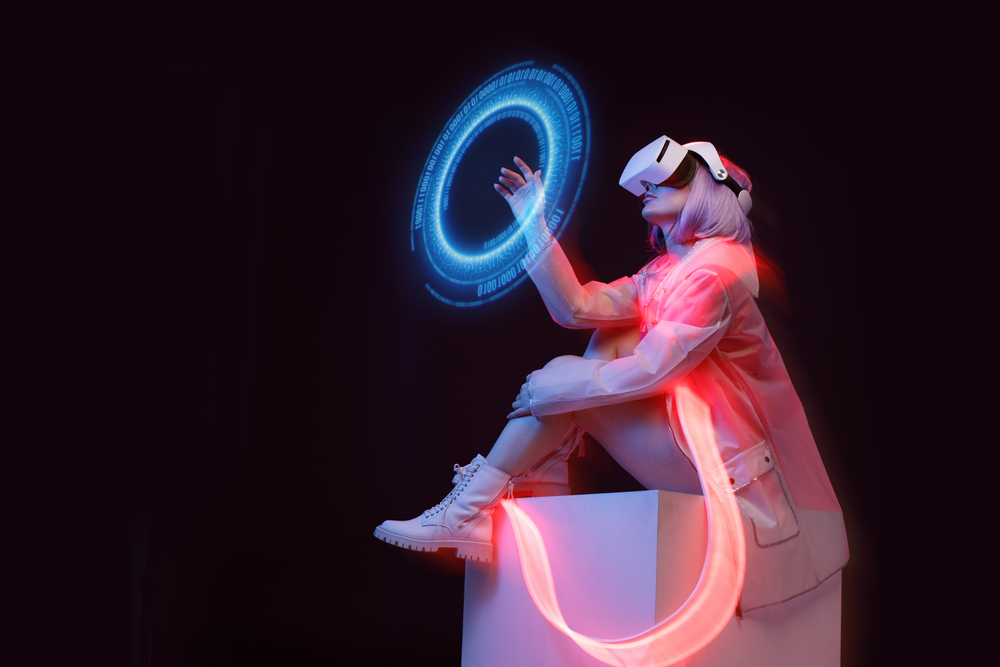Holographic Haptics: Touch the Virtual
In a world where virtual reality and augmented reality are becoming increasingly commonplace, one crucial element has been missing: the sense of touch. Enter holographic haptics, a groundbreaking technology that promises to revolutionize how we interact with digital content. This innovative approach combines light-based holograms with advanced tactile feedback systems, creating a truly immersive experience that engages multiple senses simultaneously. As we stand on the precipice of this technological leap, let's explore the potential of holographic haptics and its far-reaching implications for industries ranging from gaming to healthcare.

Holographic haptics represents a paradigm shift in this field. By leveraging light and air pressure, this technology creates tactile sensations without the need for physical contact with a solid surface. This opens up a world of possibilities for touchless interactions, potentially transforming everything from public kiosks to medical training simulations.
How Holographic Haptics Works
At its core, holographic haptics combines two key technologies: volumetric displays and focused ultrasound. Volumetric displays create three-dimensional images that appear to float in mid-air, typically using rapidly rotating LED arrays or carefully controlled lasers. These images can be viewed from multiple angles without the need for special glasses or headsets.
The haptic component comes from arrays of ultrasonic transducers that emit high-frequency sound waves. When these waves are focused precisely, they can create areas of high and low air pressure. This pressure difference is strong enough to be felt on human skin, creating the sensation of touch without any physical contact.
By synchronizing the visual hologram with the ultrasonic feedback, users can “feel” virtual objects as if they were real. The technology is precise enough to simulate different textures and even the sensation of pressing buttons or sliding controls.
Applications Across Industries
The potential applications for holographic haptics are vast and varied. In the entertainment sector, this technology could transform gaming and interactive experiences. Imagine playing a virtual instrument where you can feel the strings or keys, or exploring a digital museum where you can touch and manipulate artifacts without risk of damage.
In healthcare, holographic haptics could revolutionize medical training and telemedicine. Surgeons could practice complex procedures on virtual patients, feeling the resistance of tissues and the weight of instruments. Remote consultations could become more hands-on, with doctors able to perform virtual examinations that include tactile feedback.
The automotive industry is also taking notice. Holographic dashboards with haptic controls could reduce driver distraction by allowing eyes-free operation of vehicle systems. Similarly, in aerospace, cockpit controls could be simplified and made more intuitive through holographic interfaces with tactile feedback.
Challenges and Limitations
While the potential of holographic haptics is exciting, there are still significant challenges to overcome. One major hurdle is the resolution and strength of the haptic feedback. Current systems can create basic sensations, but replicating the full range of human touch perception remains elusive.
Power consumption is another concern, particularly for mobile or wearable applications. The ultrasonic arrays required for haptic feedback can be energy-intensive, potentially limiting the technology’s use in portable devices.
There are also safety considerations to address. Prolonged exposure to focused ultrasound could potentially have health implications, necessitating careful study and regulation before widespread adoption.
The Road Ahead
Despite these challenges, research and development in holographic haptics are progressing rapidly. Several tech giants and startups are investing heavily in this field, recognizing its potential to reshape human-computer interaction.
As the technology matures, we can expect to see early commercial applications in controlled environments like arcades, museums, and specialized training facilities. The estimated price range for early systems is likely to be in the tens of thousands of dollars, limiting initial adoption to high-end installations and professional use cases.
However, as with many emerging technologies, costs are expected to decrease as production scales up and techniques improve. Within the next decade, we may see holographic haptic interfaces becoming more commonplace in public spaces and eventually in consumer devices.
A Tangible Future
Holographic haptics represents a convergence of multiple cutting-edge technologies, each pushing the boundaries of what’s possible in human-computer interaction. As this field continues to evolve, it has the potential to fundamentally change how we perceive and interact with digital information.
The ability to touch the virtual is more than just a novelty—it’s a step towards creating more intuitive, accessible, and immersive digital experiences. As we continue to blur the lines between the physical and digital worlds, holographic haptics may well be the key to making our virtual interactions feel truly real.





